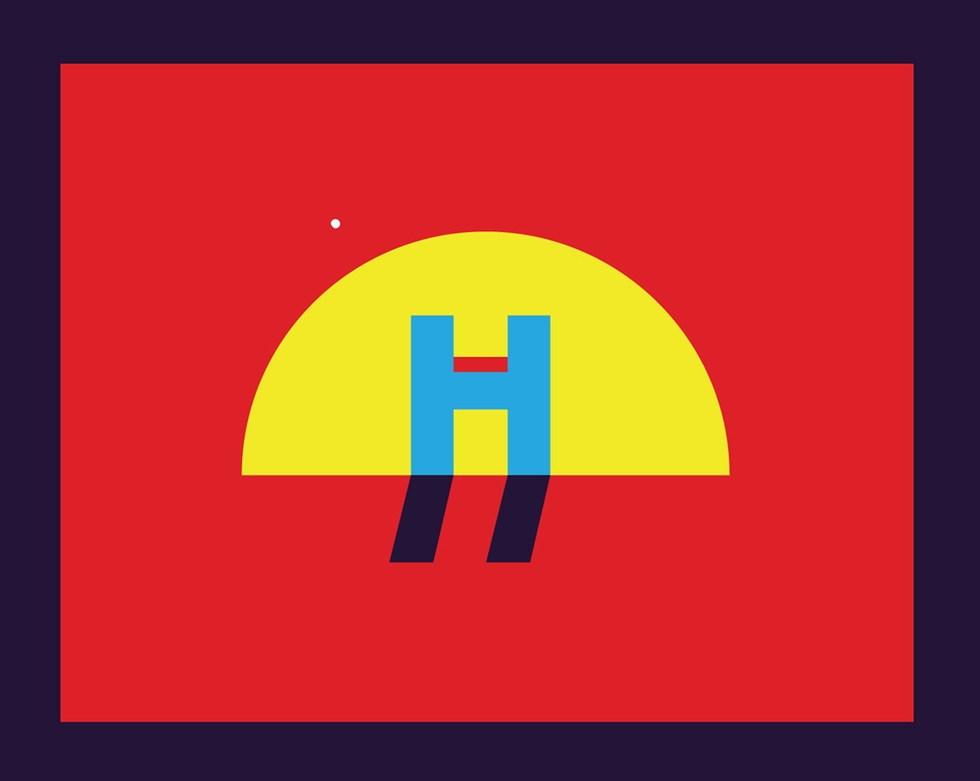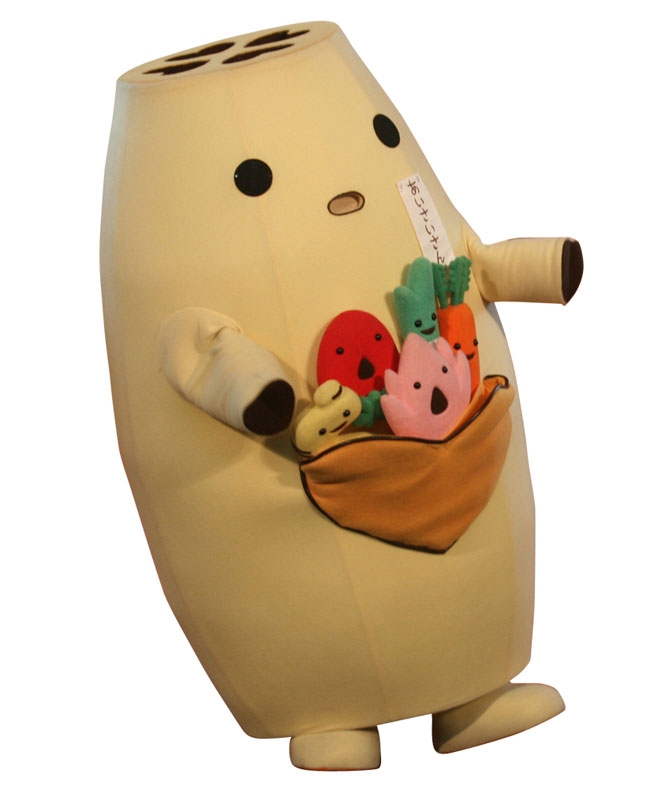Last month the IMM held its annual furniture trade show in Cologne, and showcased over 1,250 designers to over 142,000 visitors.
The new Slagbaenk from BFex might be our favorite find of IMM. It's a modular take on the typical kitchen bench essential to every Scandinavian home. There are three essential functions to the slagbaenk: it has to provide proper seating for a meal at the kitchen table, have a storage compartment, and provide more relaxed, daybed-style seating. Bfex used five planks of wood and two chairs to create a new minimal take on the bench that definitely fits within their mantra: "Art with function – Design without."
The Daniel Becker Design Studio caught our eye with its more functional take on the fireplace tile. It named the line after the chilly German capital, Berlin. The tiles were designed to have a three-dimensional form, which increases the surface area of each piece and, therefore, how much heat the tiles can release. No design integrity was sacrificed for the energy efficiency of the series either. The tiles come in four sizes and have a simple concentric pattern that allows interior designers to configure them as they wish.
It's hard to improve upon the simplicity of a wood bookshelf, but industrial design student Lucien Gumy managed to refine the shelf in a subtle way. He designed a new shelving system, titled simply, "l'étagère en bois" or "wooden shelf," that uses special joints instead of screws or nails to make the shelf customizable and easy to assemble. The system won him the D3 Student award, a well-deserved honor at IMM.
Members of Chicago's Brokeback wear big fuzzy mittens in the beautifully simple video by director Ben Geier for "The Wire, The Rag and The Payoff." We're crazy about the bits with the starry sky projection. The mittens are more than appropriate today, however, as temps dipped to the single digits in the Windy City. That said, we're still generally fans of fingered gloves on adults, no matter the climate.
New York City-based Ana Kras uses leftover cotton threads to build unpretentious yet complex lampshades that are as beautiful as they are practical. The Serbian designer makes each lantern by hand, focusing on unique shapes and abstract patterns. With her first collection in the works, we spoke with the multi-talented artist about her gorgeously earthy, one-of-a-kind shades.
You describe your Bonbon lamps as a family of lanterns. When and how was the original Bonbon lamp first conceived?
The first Bonbon was made in my apartment in Belgrade in fall of 2009. I was working on another lamp and had an extra lampshade frame sitting on my kitchen floor for weeks. I think that object was in the corner of my eye for too long, so I subconsciously thought of how to make something out of it. I got the idea of wrapping cotton threads around in a certain way and tried it and that's how the first Bonbon lamp was made.
How long does it take to construct each lamp?
First, I have frames built by a metal manufacturer and then powder-coated or plated and then it's time for my handwork. It takes about twenty hours of patient work to make the smallest one, and much more for bigger ones.
From where do you source your cotton thread?
So far, I have been using the leftovers from a Serbian knitwear company called Ivko Knits. They were so kind to support me at the very beginning. In fashion industry, things change very fast; each season brings new color palettes and the old threads are stored or thrown away. It's a nice gesture to recycle things. If, by any chance, someone who works with knitwear reads this and wants to collaborate, please let me know!
How has the Bonbon evolved since its initial creation?
Each new Bonbon is different from the previous one. I am always trying new shapes and new patterns. Lately, I have been into abstract patterns. I am also developing many new shapes and some more complex pieces consisting of multiple parts. So far, I have been making Bonbon’s usually per request, but I’m working on making a first collection, with small editions of each lamp.
* Prices are based on size and start at $1300.
The Bonbon lamp is available at anakras.com
Undoubtedly, Google Earth photos are utilized by contemporary artists in any number of ways. But Chicago photographer Clayton Hauck consistently finds amazing stuff, which he expertly captures and posts to Instagram as @_art_vandelay_. If you ever tire of images of puppies, espresso art, and your friend's latest thrift store score, give him a follow.
There's a lot of chaos in Laurent Impeduglia's paintings. Each canvas is charmingly covered corner to corner with compacted images: houses on pillars, messiahs on mountains, and evil-looking castles all standing shoulder to shoulder. And that's just from "What Did God Do For You Today." In his work, the weather isn't just bad, it's terrible. If it's not a lighting storm, it's a biblical intervention.
Impeduglia seems to mock the idea of idolatry. He has a series of paintings of huge memorial statues built on isolated mountains that bear the artist's own name, and another in which he illustrates numbered black tables covered with various idols.
Impeduglia's images depict moments of action in post-apocalyptic (or at least post-logic) cities. Sometimes he scrawls cryptic messages as titles like "Master of the Dunjeon" or "This Is Pop Shit" at the top or directly in the center of his paintings. The titles read like another element of the spontaneity in his style. We get the feeling his process includes an improvised composition, taking cues from one form to the next, rather than executing a detailed plan.
Designer Ben Pieratt introduced Hessian today, an elegantly playful collection of graphic assets, guidelines, and themes—for a brand that is still yet to be determined. If you're "a restaurant, a start-up, a clothing brand or more," you can buy Hessian and work with Pieratt while he fine-tunes the package to suit your project. While it's really great-looking, the artistry here is in the concept of selling a graphic identity using this model. It challenges traditional thought on how the story of a brand should inform its own aesthetic presence, and does so in an era when a design idea born from pure inspiration can just as easily be the foundation from where a new idea can grow. And the name isn't a misspelled Heavy Metal Parking Lot reference—just a nod to acclaimed illustrator and designer Richard Hess.
Meet Menswear Dog, "a three-year-old shiba inu in NYC with a panache for all things style," who, you know, has a Tumblr. It's only six-posts-old and is already huge on the Internet. He's one handsome, well-dressed fellow, that's for sure.
Experimentation is a generative exercise for Charles Bergquist. As part of a daily routine, the freelance director, photographer, and designer keeps late hours in his California studio tinkering with different ways to layer or process photos and video. Like most creative people, he found himself with an increasingly large folder of partially-completed work.
The Everyday Project is his way of spending more time with these not-quite-there experiments. By turning a scattered collection into an ongoing project, he created soft-pressure to motivate himself to more experimentation.
The project is essentially a series of non sequiturs. The images and videos aren't intended to be a thematically linked series, but instead a collection of one-offs born from the actual process of sitting down to figure things out. It's a bit like a look directly into Bergquist's notebook.
Selected prints from the series are available now from the Ghostly Store.
Rainwear can be hideous—drugstore ponchos, whale and anchor prints, those yellow slickers? Ugh. Parisian design duo Peter Hornstein and Johanna Senyk are revamping the notion of rain ready-to-wear with Wanda Nylon, the first fashion line specifically dedicated to lux rainwear. We're thrilled about their ultra-chic silhouettes created with innovative, water-resistant materials (90% recycled!) to protect us from the elements comfortably and elegantly. Wanda Nylon's forecast calls for neo-sci-fi and a hint of fetish plus breezy '60s kitsch.
Introduced during Paris Fashion Week in 2012, the design duo’s first SS13 collection, dubbed CYCLONE, showcases modern jackets and accessories that will have you singing in the rain. A clear PU jacket with navy polka dots and piping is fresh and functional with its removable hoody, while the matte grey belted PU trench flaunts a classic, sophisticated form.
Sharp-dressed punks with a practical side will love the black vinyl biker jacket with velvet flocking or the slick Blade Runner-esque PVC trench. Or you can out-rave the ravers with an iridescent parka in a voluminous cocoon silhouette, complete with a hoody and contrasting white zipper.
Bring on those April showers.
This Japanese website ranks 880 mascots, many of which represent Japan's 47 prefectures as well as towns, festivals, and events. We wish we knew more. Why, for example, is number one a rather innocuous duck with a ship in his belt?









